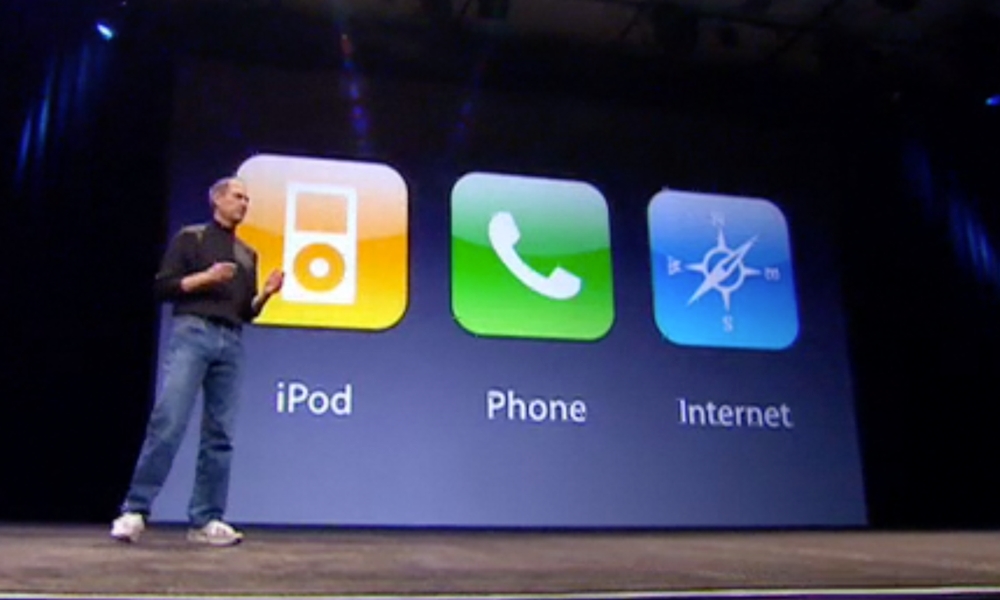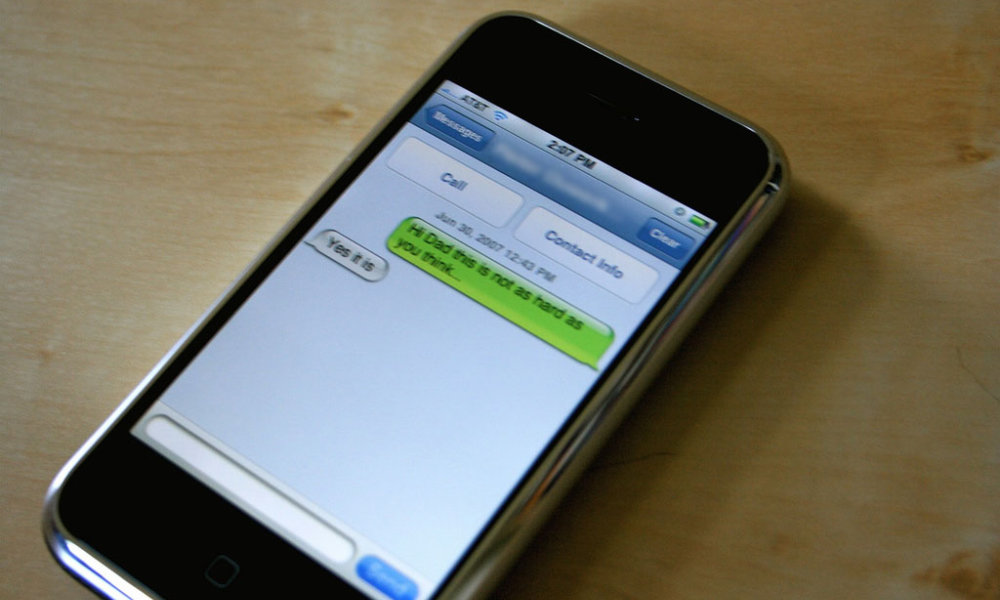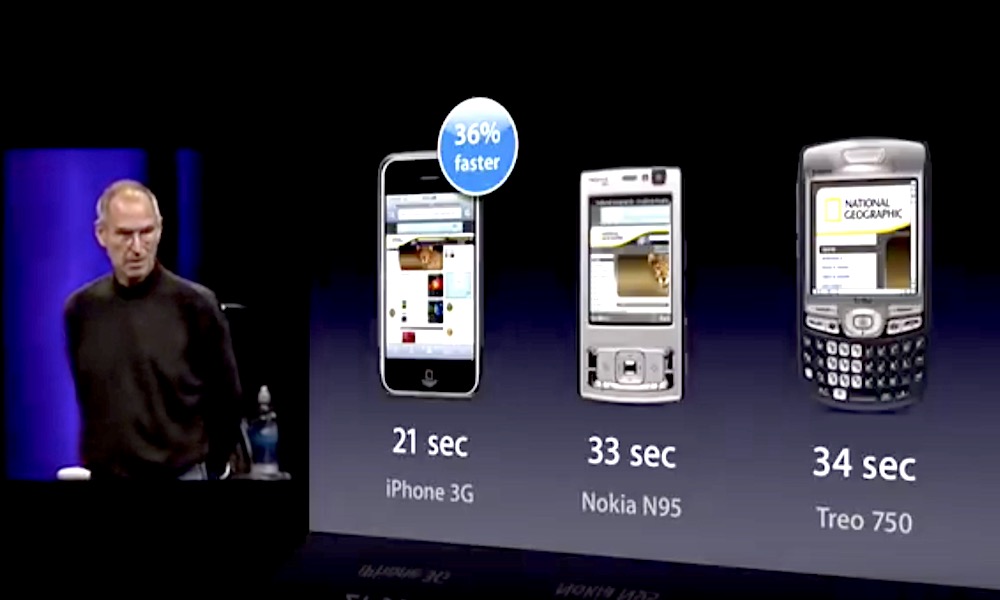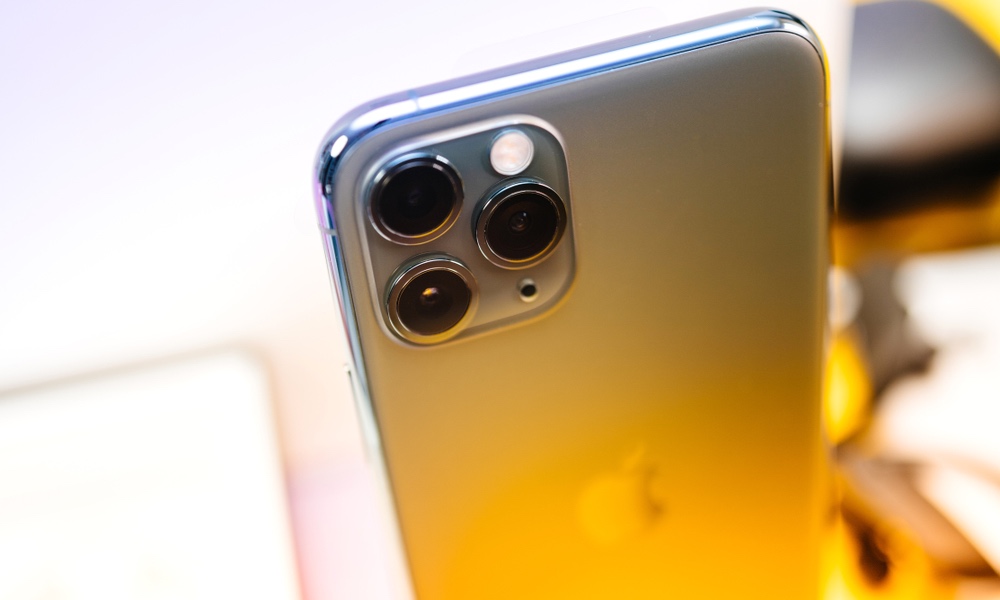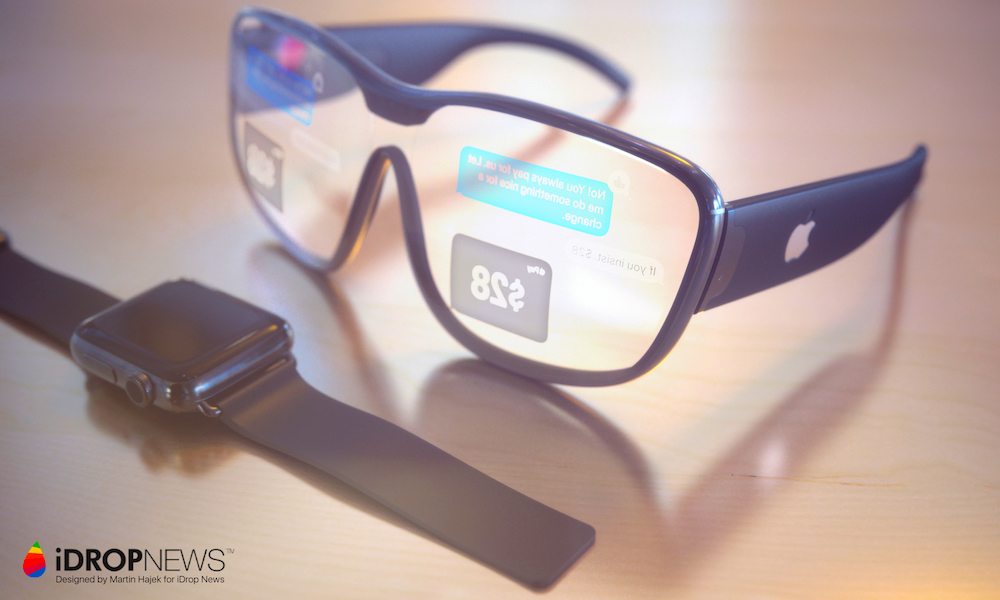iPhone Innovation – Past, Present and the Next Big Thing from Apple
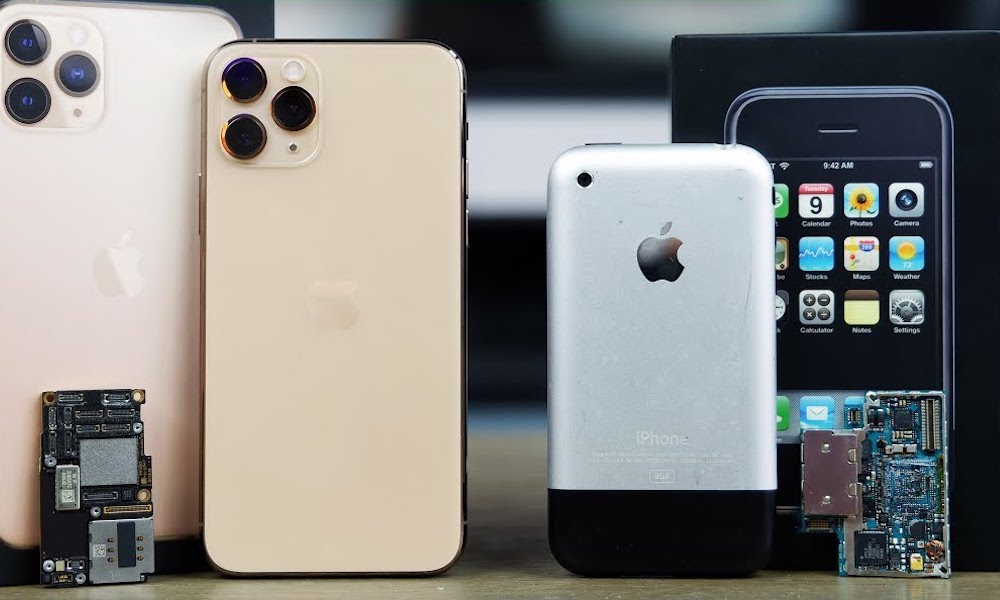 Credit: EverythingApplePro
Credit: EverythingApplePro
Toggle Dark Mode
It was January 29, 2007, when a tall, bespectacled man in a black, Issey Miyake polo neck took the stage at the Macworld Conference & Expo. The crowd at the Moscone West exhibition complex—along with the rest of the world—eagerly awaited what would become the next chapter of Apple Computer, Inc. (as it was called then).
Those of us at home tuned into the keynote presentation from our computers, not wanting to miss a thing. The large auditorium was still and silent, anticipating what would happen next. For months, rumors had been swirling of an iPod-like phone, and every Apple fan’s dream was about to come true.
From the corner of the stage, the man in the mock turtleneck, Levi’s, and New Balance 991s began walking slowly, seemingly deep in thought, humbled by the experience that was about to unfold. Steve Jobs, Apple’s Cofounder and CEO, was about to change the world. Forever.
“This is a day, I’ve been looking forward to for two-and-a-half years,” he began. “Every once in a while, a revolutionary product comes along, that changes everything.” No truer words have ever been spoken.
The Dawn of a New Era
Up until this point, phones were pretty basic. Text messaging and calling were the primary function of the devices in almost everyone’s pocket. Those with BlackBerry, Palm, and other smartphone devices also used their phones for sending emails and browsing the mobile web; but, it didn’t even compare to what was about to come.
When Steve stepped out on that stage more than a dozen years ago, time stopped for a moment; and then, it leaped forward forever.
The iPhone, a marvelous sheet of plastic and multitouch glass, was unveiled to thunderous applause, screams, and cheers. The world would never be the same.
A Magical Device in Your Pocket
The iPhone was simply ahead of its time. It was the device we all dreamed of, but—up until now—never got. It exceeded expectations and it set a new standard for all future mobile devices. It changed the entire computer-dominated landscape and put into motion a new idea of what consumer electronics should be capable of.
Looking back now, the original iPhone may seem limited and simple, but in 2007, it was futuristic. When most people were content texting, taking photos and placing calls from their phones, Apple brought advanced music and video capabilities to the palm of your hand.
For those who were browsing WAP sites and sending mobile emails, Apple introduced a new desktop-class browser and email client that was visually stunning and easy to use. It might not seem like much today, but it’s that pivotal moment in history that gave us everything we have today.
There’s an App for That
The original iPhone wasn’t perfect. It had shortcomings compared to some mobile devices of its time.
- It didn’t have support for 3G (the latest cellular offering at the time).
- It didn’t have the ability to send pictures or videos via text message.
- And—most notably—it didn’t support third-party apps, unlike some of the other smartphones of that time.
Despite its shortcomings, the iPhone was undoubtedly the best phone on the market. Sure the lack of 3G resulted in slow data speeds, but it’s possible the iPhone helped grow Wi-Fi into the behemoth it is today. Apple allowed developers to create Web apps (essentially interactive HTML sites), which tamed the crowd for now. MMS was likely the biggest exclusion by today’s standards, yet the missing 3G seemed to be the biggest issue for most reviewers.
Apple was listening, and the next generation of iPhone—the iPhone 3G—addressed two of these flaws. As its name suggests, the new iPhone had support for 3G and the second version of iPhone OS introduced the much anticipated App Store. The App Store, like the phone itself, shaped history.
The Evolution of the iPhone
Over the years, other phone manufacturers followed Apple’s lead. New players entered the market and many of the most popular phone manufacturers of the time didn’t react fast enough.
Palm, RIM (BlackBerry), and Nokia, once the main players in the market space, found themselves on the chopping block.
Those who adapted, like Samsung, and took advantage of Google’s Android platform (which also evolved as a result of the iPhone) found success. The modern smartphone had been born and was evolving at a lightning-fast pace.
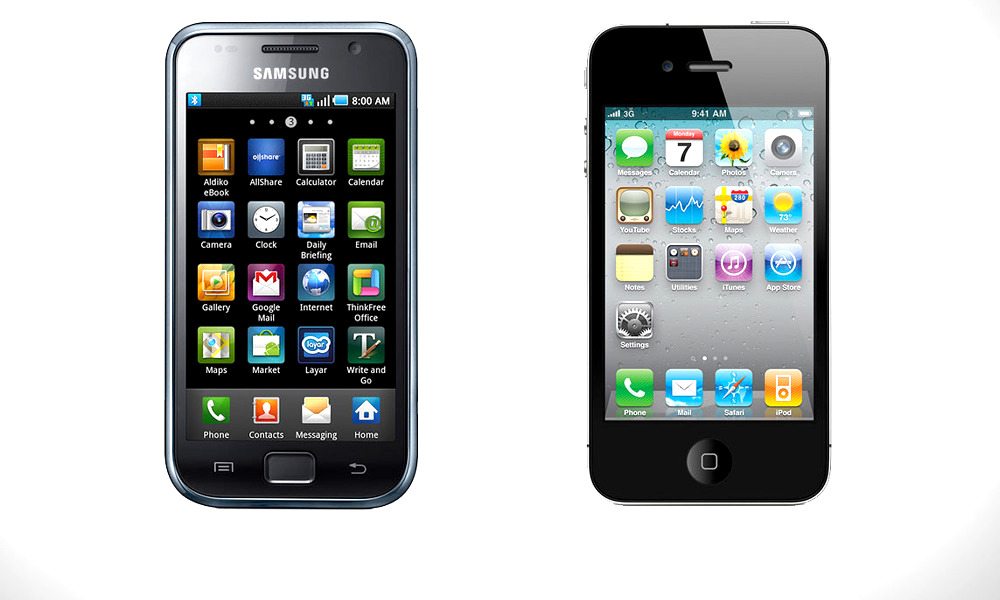
Within the past decade, more pixels were packed into displays, more and more storage space and processing power became available, point-and-shoot cameras were replaced by phones, the internet as we know it changed, Adobe Flash bit the dust, and so, so much more.
But with all of these changes and additions, what’s left?
What’s up Apple’s Sleeve?
The iPhone, and other smartphones, continue to evolve in functionality and design; but, many have noted the innovation train, seems to be slowing.
There’s nothing wrong with this. Not everything needs to be revolutionary or drastically improving all of the time. Some things reach a point where they only need minor adjustments. It’s very possible the iPhone, and similar devices, have reached that point.
Like computers before them, the new features we require are few and far between. Instead, newer iterations focus on speed and technical capabilities, rather than mind-blowing new features. But if that’s the case, is there anything of substance left for iPhone to gain?
The Next Big Thing
In a way, the answer is no. Folding phones and fancy cameras aren’t revolutionary; they’re fun, and maybe even useful, but they don’t reshape the world of technology. So maybe the next big thing isn’t an iPhone.
When the iPhone was introduced, the iPod was Apple’s big product. Before iPod, there was the Mac. Like the iPhone, the Macintosh changed the world at “Hello,” and iPod launched a music revolution. It stands to reason that the next big leap for consumer electronics hasn’t been introduced yet, and won’t be a simple upgrade to our computers, wearables, or other mobile devices.
Most of the time, the next big thing isn’t something we see coming. Like the iPhone, we often sense something great is coming, but when it hits, it comes out of nowhere.
So maybe the next iPhones won’t be revolutionary, but that doesn’t mean they can’t have a lot to offer. Obviously we’ll see improved specs and other minor changes, but we might also see some new features. Maybe they’ll be useful, maybe they’ll be gimmicky, and maybe we’ll need time to see how they catch on (stop trying to make “Slofie” a thing).
If Apple follows the current trend we’ll likely see folding phones and better cameras, but these features don’t reinvent the wheel. Additionally, by doing the same thing as everyone else, Apple moves to the backseat of innovation. They stop being a leader when they simply follow the crowd. They’re already going down that road—whether good or bad—in regard to streaming services.
In terms of software, Apple has a chance to continue innovation, stealing some good ideas and coming up with some of their own. Let’s look at a few ways iOS 14 and 15 could make the iPhone experience even better.
1. Spatial Awareness
Our phones know where we’re at, what’s on our schedule, who we talk to, and more. Using neural engines, machine learning, coprocessors, and Siri, Apple could feasibly make use of this data to help improve iOS.
For example, iOS could learn how you interact with notifications and adjust them automatically based on the app, the content of the notification, your location, your calendar, and many other points of reference. So when you’re in an important meeting, notifications could be silenced automatically.
Playing a game? Maybe certain notifications are ignored until you’re done.
In a theater? Your phone could determine which notifications are important, and only let those through (silently).
This same awareness would be similar to how your iPhone currently anticipates your usage, but on a grander, more intuitive level.
2. More Refined System Alerts
Apple did a great job improving the volume controls that used to cover the whole screen. Now, how about making it so incoming calls don’t fill the screen and so that battery notifications are less intrusive?
Siri is another feature that takes over the whole screen and feels like it shouldn’t. A subtle pop-up would allow us to continue using our device and be able to see what’s currently on the display while speaking to Siri.
Lastly, a more refined home screen would be nice. I get trying to keep the iconic home screen, but it’s getting a little stale. There is so much potential for it to be more useful and interactive.
3. A More Personal Experience
When Apple added the sleep light to MacBooks, the idea was to have it imitate breathing to help your device feel more personal and alive. Over time, Apple’s products seem to have lost this personal aspect in favor of sleeker, more modern designs. I’m fine with that, but I’d appreciate if my iPhone was a little more in tune with my life. Siri needs to be more helpful. Notifications need to be less bland. And, whatever happened to dynamic, live wallpapers being a thing? I was really hoping for a lot more there.
4. Car Integration
Please Apple, let us control our cars with our iPhones. Like HomeKit, but CarKit.
5. Find My
The new Find My app is great. Apple could build upon this by adding third-party integration for things like Tile trackers and smartwatches for kids.
In line with finding devices, it would be nice if Apple Watch notified us when we forget our iPhones (when they disconnect).
6. Seriously Improved Siri
You’re killing me Siri. It’s 2020 and you’re still practically in beta.
Personally, I would love to see a new MyCard feature added to Siri. This would be an expansion of the current contact card and would include more information. Such as alternate names and titles Siri can choose from when addressing me, favorites (colors, foods, etcetera), health and medical information, personal preferences, likes, dislikes, and more.
Saying “Hey Siri” over and over again gets old. How about just “Siri” for follow up commands? Could Siri lighten up and learn more jokes and social lingo? What about adding something similar to Alexa’s skills?
Siri has so much room for improvement. I’d really like to see more contextual conversation threads and call screening for starters.
7. Family Features
Apple sucks at understanding families and multiple users. Their parental controls have potential, but have so much room for improvement, multiuser support on Apple TV is useless and nonexistent on iPadOS, and shared purchases don’t work well.
If they reached out to actual families that use their products to their full extent, Apple could really make the experience more useful and less frustrating for multiuser households.
What’s Next?
This article only skims the top of the iceberg. The iPhone is a fully mature product; the next revolutionary product is out there, and it’s not another iPhone. That’s not to say the iPhone can’t improve. We have an entire list of things we’d love to see in future versions of iOS, the items listed previously are just a handful.
What’s on your wishlist? Do you think the iPhone has another revolutionary stage coming? Let us know your thoughts in the comments section and on social media. We love to hear your thoughts. Thanks for reading!


